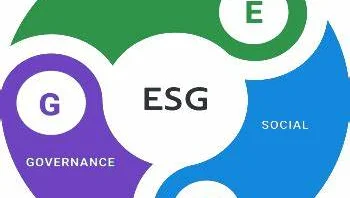Digital Twin-Based Smart City
During the early years of European settlement of the Americas
•
Feb. 3, 2023

Digital twins are regarded as a new starting point for today’s smart city development. This paper defines digital twins and digital twin cities, discusses the relationship between digital twins and smart cities, analyzes the characteristics of digital twin-based smart cities, and focuses on the five main applications of digital twin-based smart cities. Finally, we talk about the future of smart cities based on digital twins.
The “Digital Twin” is widely assumed to be a simulation process that fully utilizes physical models, sensors, historical data of operation, and so on to integrate information of multi-discipline, multi-physical quantities, multi-scale, and multi-probability. It acts as a virtual simulation process for physical products. In fact, there are currently numerous interpretations of the concept of digital twins, and no consensus definition has been reached. The essence of digital twins is the existence of a bi-directional mapping relationship between physical and virtual space. This is in contrast to unidirectional mapping, which only maps data from physical entities to digital objects. However, digital twins allow virtual objects to control physical entities without the need for human intervention, which digital shadows do not. The digital twin can map the physical entities and attributes, structure, state, performance, function, and behavior of systems to the virtual world, forming a high-fidelity dynamic multidimensional, multi-scale, multi-physical quantity model, which will provide an effective way for observing, recognizing, understanding, controlling, and transforming between the virtual and the real.
The development of digital twin cities will spark significant advances in urban intelligent planning, management, and services, serving as a “new starting point” for the development of smart cities. This will contribute to the goal of visualizing all city, management, and service information. A digital twin city is not only the goal of a digital city, but it is also an important component of a smart city. It is a critical facility and fundamental capability that enables the city to achieve smartness. It is also a watershed moment in the transformation of urban informatization from qualitative to quantitative change driven by technology, allowing for more room for innovation in the construction of smart cities.
Smart city characteristics based on digital twins
There are various interpretations of the concept of digital twin from various perspectives. It begins with various dimensions, summarizes and analyzes the current various understandings of digital twins, and proposes the ideal characteristics of digital twins in the model dimension, data dimension, connection dimension, service/function dimension, and physical dimension, which is the “five-dimensional model” of digital twin. It is stated that because digital twins exhibit different characteristics at different stages, understanding and application of digital twins cannot be separated from specific objects, specific applications, and specific needs. As a result, the actual application does not have to have all of the ideal characteristics of the established “digital twin,” and it is acceptable for it to meet the specific needs of users. The digital twin city, as an extension of the digital twin concept in the urban field, exhibits specific characteristics based on the ideal characteristics of the digital twin.
In addition to the previously mentioned characteristics, digital twin cities have four major characteristics: accurate mapping, virtual-real interaction, software definition, and intelligent feedback. Accurate mapping implies that the digital twin city realizes comprehensive digital modeling of urban roads, bridges, manhole covers, lamp covers, buildings, and other infrastructures in the physical city by arranging sensors on the air, ground, underground, and river levels in order to fully perceive and dynamically monitor the city’s operating status, and finally form the accurate information expression and mapping of the virtual city to the physical city in the information. Virtual-real interaction implies that once generated, all types of “traces,” such as those of people, logistics, and vehicles that can be observed in the physical city, can be searched in the virtual city. The twin cities create a corresponding virtual model based on the physical city and use software platforms to simulate the behavior of urban people, events, and objects in the virtual space. Intelligent feedback refers to the function of providing reasonable and feasible countermeasures to potential adverse effects, conflicts, and potential dangers of the city through planning and design, simulation, and so on the digital twin city. The integration of IoT, cloud computing, big data, AI, and other new-generation IT technologies on the basis of the digital twin city can guide and optimize the planning and management of physical cities, improving the supply of citizens’ services and assisting more in the construction of smart cities.
Related

Embracing ESG: How Businesses Can Thrive with Sustainability, Social Responsibility, and Strong Governance
ESG encompasses a range of considerations that assess a company's impact on the environment, its relationships with employees and stakeholders, and its governance practices. In this research, ...
Read more
Business Industry Insights, Trends and Challenges in 2024
Here are some key insights, trends, and challenges expected in the business industry in 2024: Insights: Digital Transformation : Businesses are continuing to embrace digital transformation to...
Read more